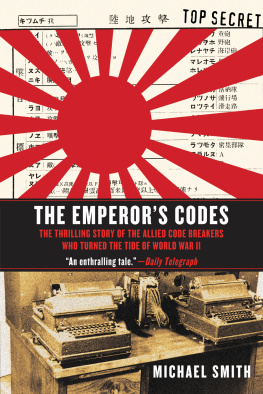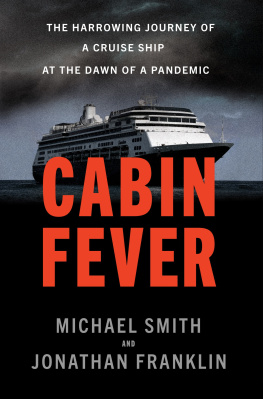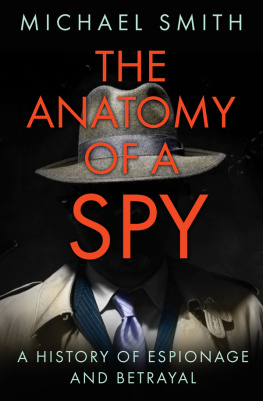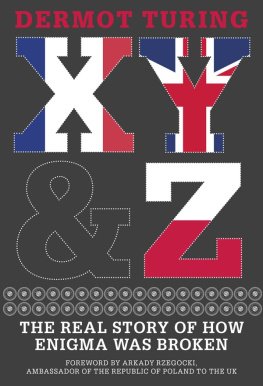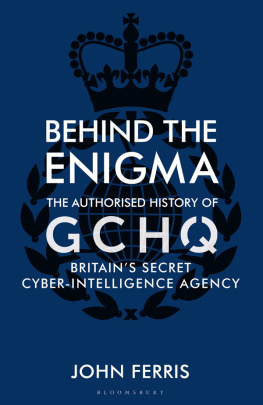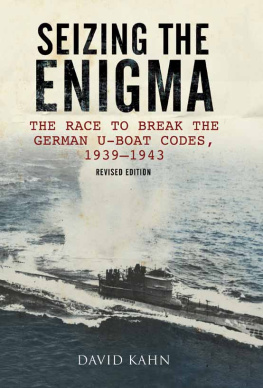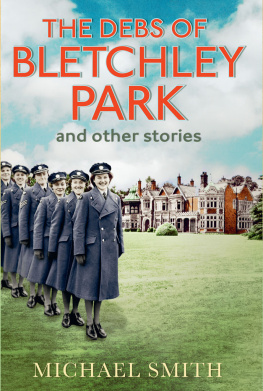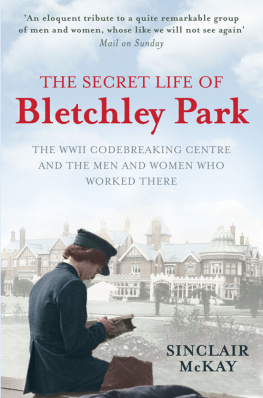Praise for Michael Smith from former Bletchley Park codebreakers:
Im delighted and astonished by Station X . Michael Smith has caught so well the mixture of nuttiness, angst, hard slog, irritation and euphoria. Susan Wenham, Hut 6 cryptographer, breaking German army and Luftwaffe Enigma.
Gives a more comprehensive picture of the wartime activities of myself and my colleagues than any other book on Bletchley Park. Jimmy Thirsk, Sixta Log Reader analysing German radio communications for Hut 6.
A thoroughly enjoyable read and a wonderful reminiscence of times gone by. It brought it all back. Pat Wright (ne Bing) Hut 8 Type-X Operator, deciphering naval Enigma messages.
Michael Smith has made a brilliant job of drawing together an enormous amount of first-hand evidence to produce the first connected account of BP. John Herivel, Hut 6 cryptographer and originator of the Herivel Tip, which broke the main Enigma cypher.
Wonderfully enjoyable. Station X is very well researched and one of the best books around on Bletchley Park. Barbara Eachus (am Abernethy), former secretary to Alistair Denniston, Head of GC&CS, and one of the few surviving members of Captain Ridleys Shooting Party.
CONTENTS
ACKNOWLEDGEMENTS
I must thank a number of people for their assistance in the writing of this book, most notably Simon Greenish, Kelsey Griffin and the staff and volunteers of the Bletchley Park Trust, who work so hard to keep the memory of the codebreakers alive. I am particularly grateful to the late Keith Batey, and to Mavis Batey, Bill Bonsall, Frank Carter and Brian Oakley for their assistance on technical matters, although I would like to stress that any errors that appear in this book are mine alone. I would also like to thank all the former codebreakers I have interviewed over the past fourteen years and whose memories appear in this book. The work of Bletchley Park codebreakers undoubtedly did much to assist the Allies in winning the war. This book is an unashamed tribute to them and the astonishing organisation that Bletchley Park was.
I thank the Bletchley Park Trust for providing most of the photographs used in this book, Iain Dale and James Stephens at Biteback for their support and their work on this project, Hollie Teague for a superlative piece of editing and Namkwan Cho for a brilliant cover. Thanks are also due to my agent Robert Kirby and to my wife Hayley who, as ever, suffered far more than the author while this book was being written.
Michael Smith, July 2011
CHAPTER 1
CAPTAIN RIDLEYS SHOOTING PARTY
T he sudden increase in activity up at the old Leon estate led to a great deal of excitement in the sleepy Buckinghamshire town of Bletchley in the last few months of 1938. Amid the deteriorating situation in Europe, where war with Hitler and Nazi Germany seemed unavoidable, there was no shortage of suggestions as to why workmen might be so busy laying concrete, installing a new water main, digging in power cables and laying telephone lines to connect the old mansion house at Bletchley Park to Whitehalls corridors of power.
Then there was that rather odd-looking group of people, mainly middle-aged professor types accompanied by surprisingly young women, who arrived at the Park in August 1938. They stayed in local hotels and called themselves Captain Ridleys Shooting Party, as if they were there for a weekend in the country. No one in Bletchley was fooled by such a fancy name. Something very odd and very hush-hush was going on up at the Park.
The small town of Bletchley had been a tiny hamlet until the arrival of the locomotive turned it into a major railway junction in the mid-nineteenth century. The estate itself had been owned by the Leon family since 1883, when the wealthy city financier Herbert Leon bought it as a country estate. He built a mansion house and used his money and influence to turn himself into a pillar of the local community, first as Liberal Member of Parliament for Buckingham and later as a minor member of the aristocracy. But when he and his wife Fanny died the estate was sold off to a builder who wanted to demolish the mansion and build on the land. The removal of the mansion would certainly have been no loss to Britains architectural heritage. It was an ugly mix of mock-Tudor and Gothic styles, built in red brick and dominated on one side by a large copper dome turned green by exposure to the elements. The grounds around the mansion were more pleasant. It looked out over a small lake, rose gardens, a ha-ha and even a maze, all put in place by the Leon family.
As war loomed and Members of Parliament worried over the countrys lack of air defences in the face of increasingly warlike noises from Germany, the mansion was rescued from the demolition ball. A mysterious government official paid the then enormous sum of 6,000 to buy the entire estate and an army of workmen moved in. The story was put about that the mysterious new owner had bought Bletchley Park on behalf of the government to turn it into an air defence training school. The Bletchley District Gazette told its readers that this story had been dismissed out of hand by its sources in Whitehall, but whenever the subject was broached with any of the new arrivals they insisted they were working on Britains air defences. Who knew what the truth was? Whatever it might be, it was clearly related to the threat of war, and very, very hush-hush.
It was in fact far more secret than anyone then living in Bletchley was ever likely to imagine. In June 1938, Bletchley Park had been bought by Admiral Sir Hugh Sinclair, the head of the Secret Intelligence Service now known as MI6 to be used as a war station for various parts of his organisation, which were scheduled to be evacuated from London in the event of war to remove them from the threat of German bombing . Sinclair bought Bletchley Park out of his own pocket, said a former MI6 officer who later worked as the services archivist. He could not get any joy out of the War Office or anyone else to provide him with a site so he went and bought it. We know he paid for it, were not even sure if he was ever repaid. He died soon afterwards, so he probably wasnt. Sinclair left the estate to his sister Evelyn, which suggests that he had not been paid back, since he could scarcely have left her something he did not own. But he was a wealthy man and he and his sister were extremely close. She shared in the family fortune and had no more need of the money than he did. She had in fact joined the Government Code and Cypher School (GC&CS) before the war began and was one of those sent to Bletchley Park. There is no doubt that she would have been aware of what Sinclair wanted to happen to the estate and she swiftly signed it over to the chief administrative and financial officers of MI6, Captain William Ridley RN and Paymaster-Commander Percy Sykes.
Sinclair certainly planned for Bletchley Park to be the wartime home of the vast bulk of MI6, to keep them safe from German bombs and spies. One group destined to move to the Park at the start of the war mirrored the work of James Bonds Q, designing special explosive gadgets for British secret service officers tasked with sabotaging the German war effort. Another included the communications experts who had equipped Britains spies abroad with wireless sets to cut the time it took to obtain their intelligence reports and ran the wireless network, together with the decoders who unravelled the messages the British secret agents sent back to London. By far the most secretive of the people Sinclair intended to send to Bletchley were the governments top secret codebreakers, whose existence was virtually unknown to all bar the most senior officials in Whitehall.
Next page

